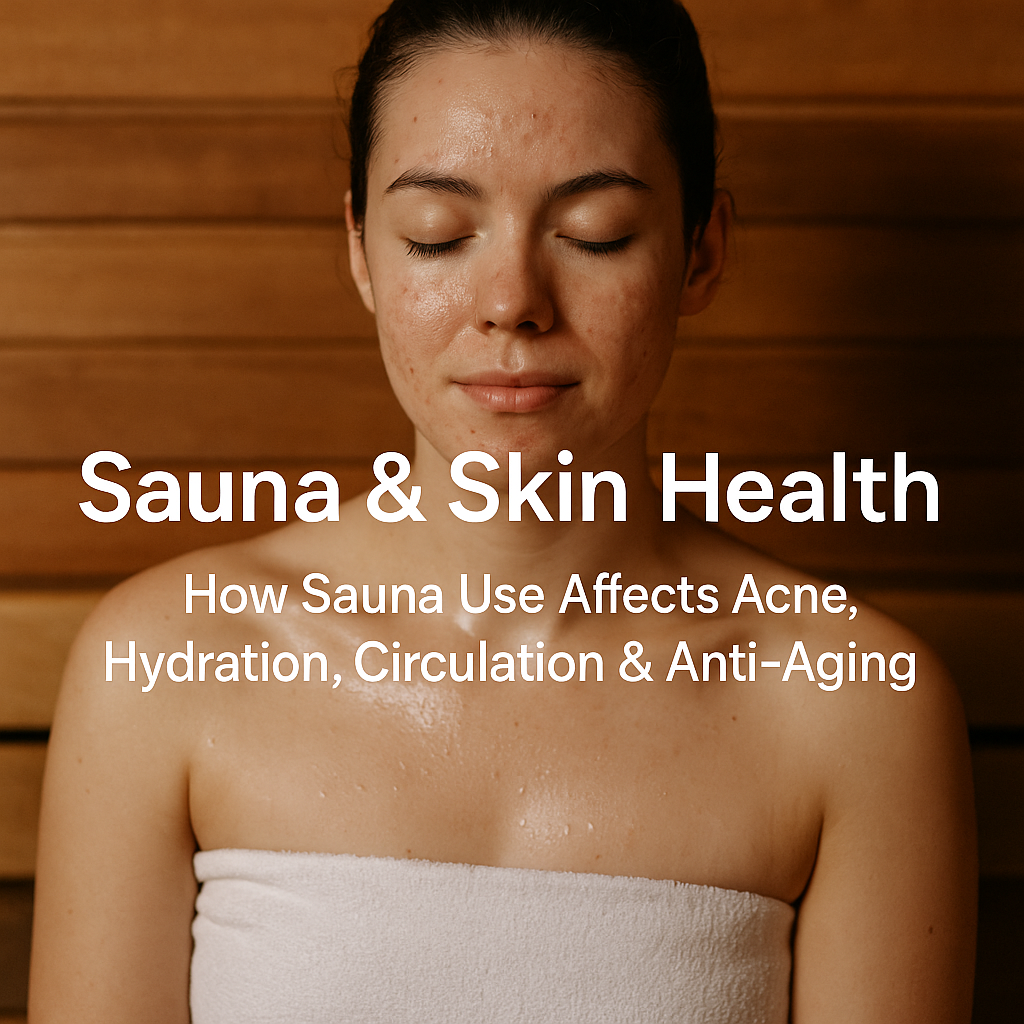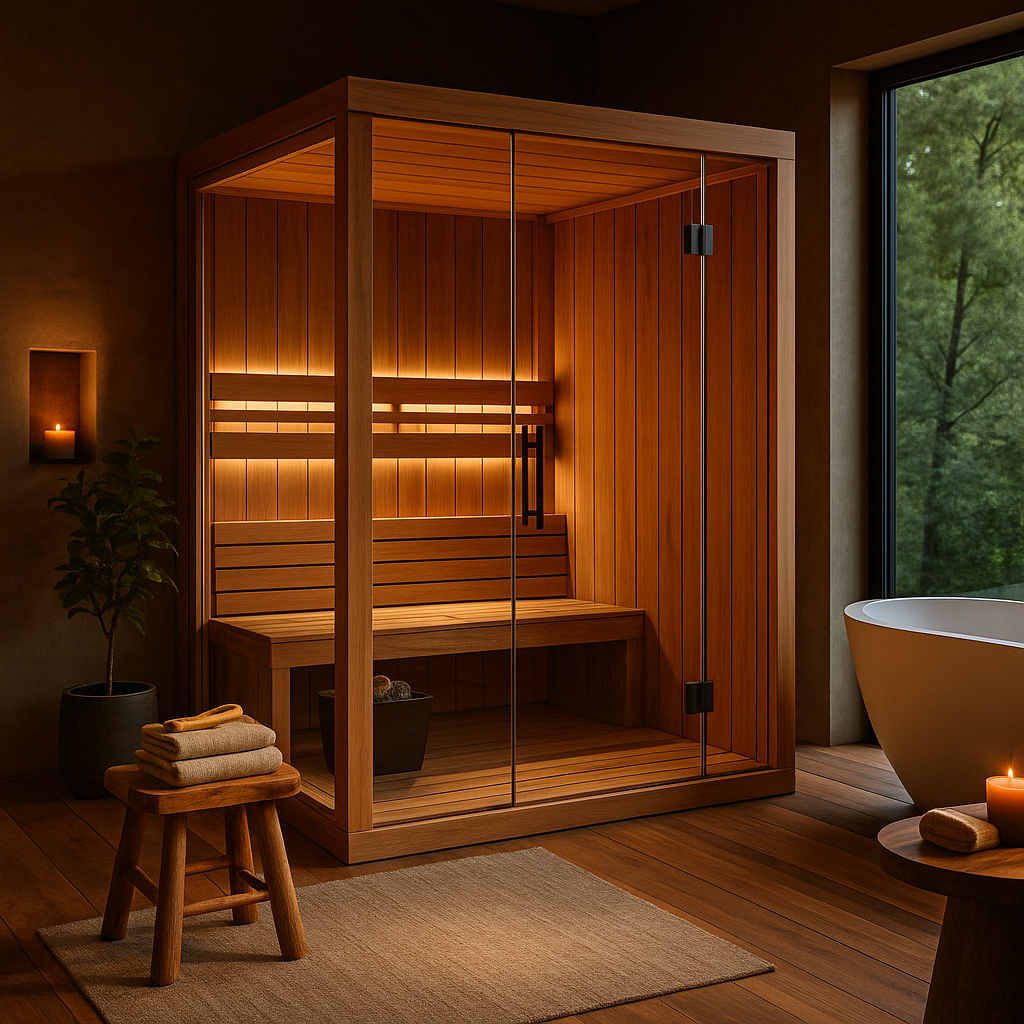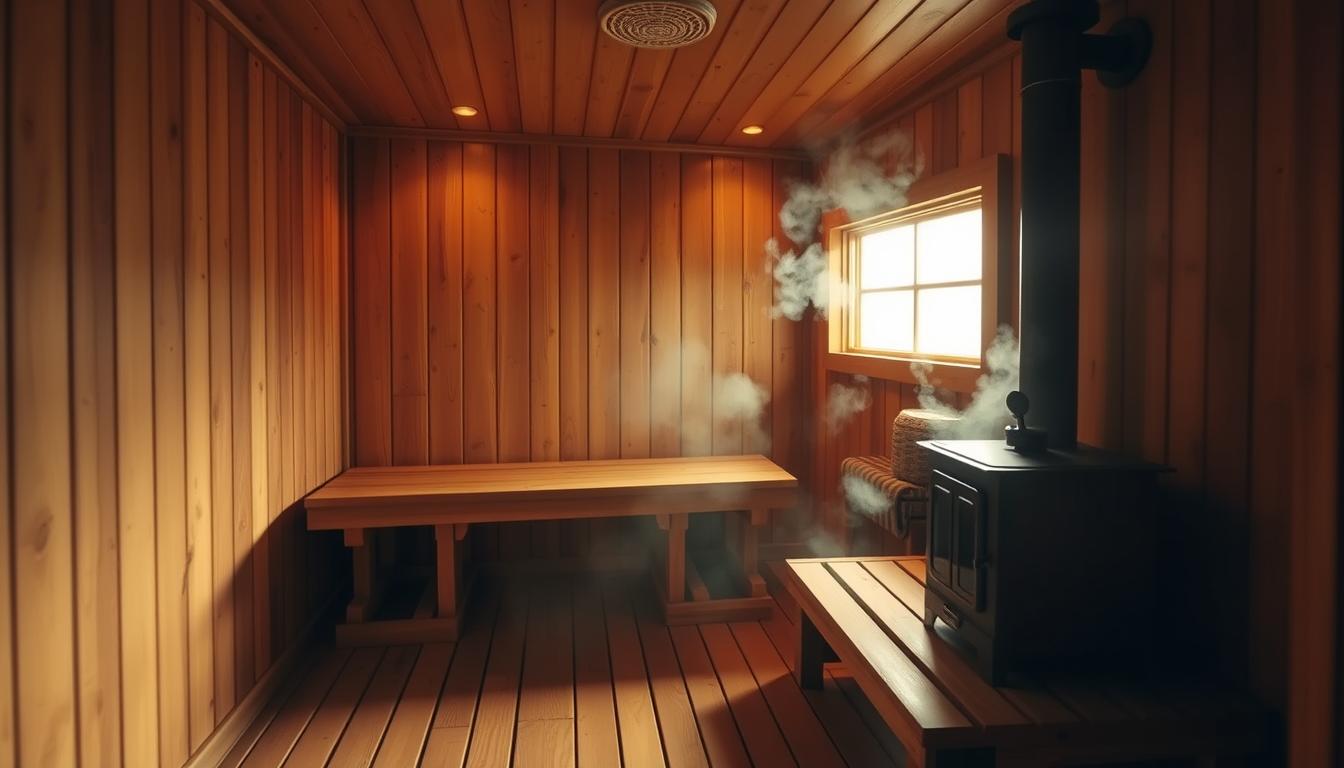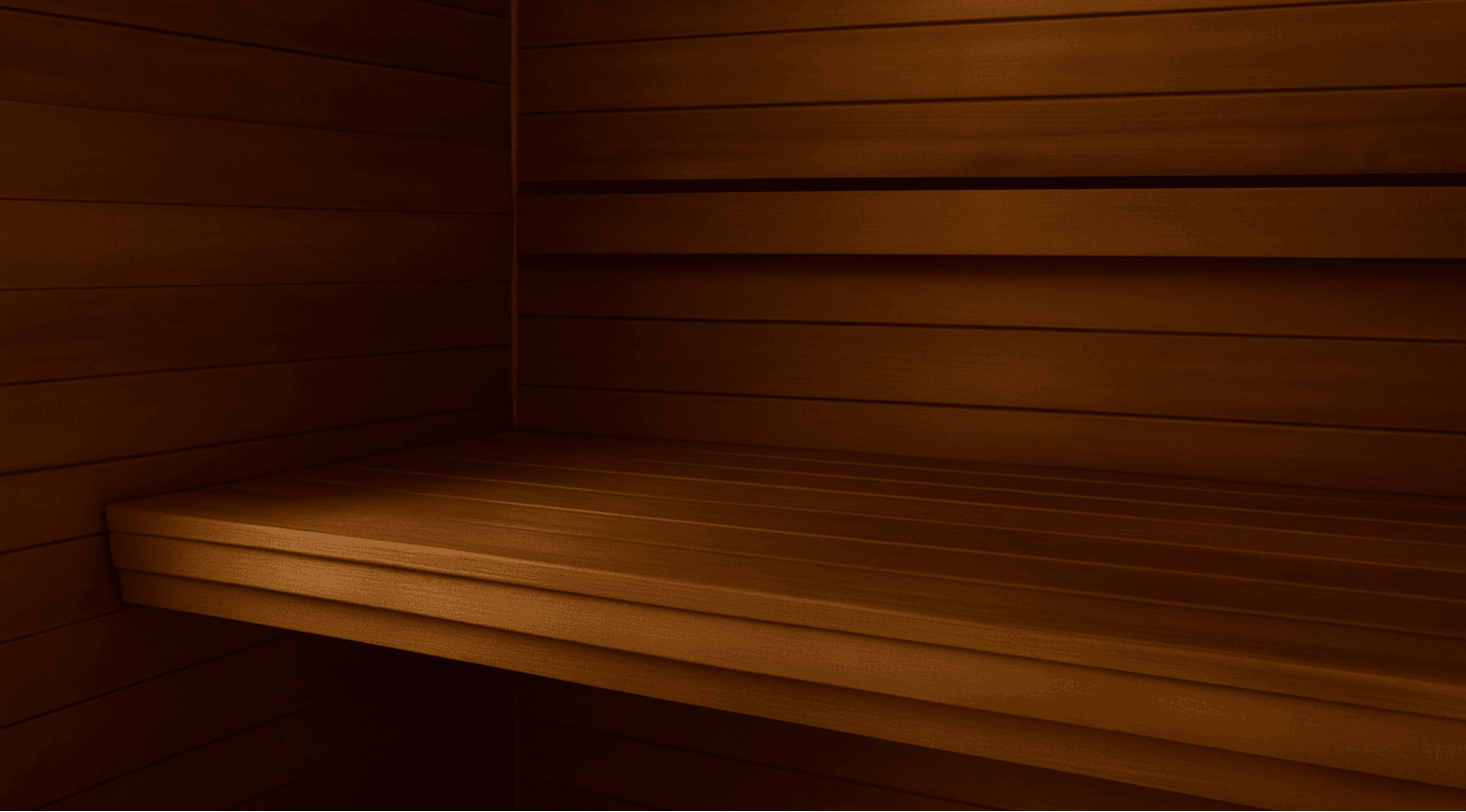
Sauna & Skin Health: Benefits for Acne, Hydration & Anti-Aging
Introduction
There’s nothing quite like that post-sauna skin glow – cheeks flushed, pores open, and a sheen of sweat that makes you feel purified. But what exactly is happening to your skin during a sauna session? Can regular sauna use help with issues like acne or dry skin? The relationship between saunas and skin health is a fascinating mix of science and self-care. On one hand, sweating in a home sauna can flush out toxins and increase blood flow (hello, radiance!). On the other, the intense heat might dry out your skin if you’re not careful. In this comprehensive guide, we’ll explore the effects of sauna heat on your skin – from acne and sebum (skin oils) to hydration, circulation, and even potential anti-aging benefits. We’ll also share tips to maximize the positive effects (and avoid any pitfalls) so you can confidently use your sauna for wellness and nurture your skin at the same time.
Sweating it Out: Detoxification, Pores & Acne
One of the immediate effects of sitting in a sauna is sweating... a lot! This perspiration isn’t just your body’s way of cooling down – it can have cleansing effects for your skin. As your body heats up, your pores dilate (open) and sweat flows, helping to flush out dirt, bacteria, and dead skin cells that may be lodged in your pores. Think of it as a deep cleansing facial for your entire body. This process can be beneficial for those prone to acne or blemishes: when done regularly and followed by proper washing, sauna-induced sweating may reduce the occurrence of clogged pores and pimples.
There’s even scientific evidence that saunas can help with oil balance in the skin. In a study of regular sauna bathers, researchers observed a decrease in skin sebum (oil) levels on the forehead after consistent sauna use. Less excess sebum means fewer blockages that lead to acne. Additionally, sweat contains small amounts of antimicrobial peptides – in simple terms, natural germ-fighters. Sweating might help inhibit bacteria like P. acnes (the culprit behind acne breakouts) on the skin’s surface. No wonder many people find their complexion clears up when they add sauna sessions to their routine.
It’s important, though, to practice good hygiene with your sauna regimen. Always shower (or at least rinse your face) after a sauna to wash away the impurities that sweat brought out. Otherwise, as the sweat dries, those impurities could resettle and irritate your skin. Use a gentle cleanser – your post-sauna skin will be sensitive – and consider ending with cool water to help close your pores after they’ve been open from the heat. And remember to keep a towel on your bench and avoid touching your face during your sweat; you don’t want to introduce new bacteria while your pores are wide open.
For acne sufferers, start slowly with sauna therapy. Begin with shorter sessions (10 minutes or so) to see how your skin reacts, and ensure you’re hydrating and cleansing properly. When done right, sauna bathing can be a complementary method to reduce breakouts, giving you that clearer “sauna skin” that devotees talk about.
Hydration, Dryness & the Skin Barrier
It’s an interesting paradox: saunas dehydrate you (and your skin) during the session, yet regular sauna use can actually improve your skin’s hydration in the long run. How is that possible?
In the short term, the dry heat of a sauna will cause your skin to lose moisture. You might notice after stepping out that your skin feels tight or drier until you cool down. People with very dry skin or conditions like eczema may find that a hot sauna aggravates dryness or irritation if they don’t take precautions. In fact, a dry sauna can temporarily dry out the skin’s surface, and those with atopic dermatitis (eczema) sometimes report worsened redness after sauna use. However, the key is what happens after the sauna and with regular practice.
Studies have shown that regular sauna bathing strengthens the skin’s barrier function and its ability to hold moisture. Essentially, your skin gets “trained” to recover faster from the heat stress. One research finding noted an increase in stratum corneum hydration (that’s the outer skin layer) and a more stable skin pH in people who sauna frequently, suggesting a more resilient, moisturized skin barrier over time. Moreover, anecdotal reports (and many dermatologists) mention that skin can become softer and more supple with consistent sauna use, because old, dry skin cells are shed away more effectively (thanks to sweating and improved circulation) and the new skin beneath is healthier.
To make the most of these benefits while avoiding dryness, follow these tips: Always rehydrate your body and your skin after a sauna. Drink plenty of water as soon as you’re done (your skin hydrates from the inside out). Then, within 30 minutes of finishing your sauna and cool-down shower, apply a good moisturizer or body oil. This locks in moisture on your warm, receptive skin and prevents post-sauna dryness. Many people find that a sauna plus moisturizer routine leaves their skin glowing and well-hydrated the next day. If you have naturally dry skin, consider using a humid sauna (add a bit of water to the sauna rocks for steam) or use a steam room occasionally; the humidity can help mitigate dryness during the session.
Another benefit: sauna use may aid in gentle exfoliation. As your skin heats and softens, the outer dead cells loosen, making it easier to wash or scrub them off (don’t over-scrub, though – your skin is sensitive after heat). This reveals fresh skin beneath which better retains moisture. The result is skin that not only feels cleaner but actually becomes more efficient at staying hydrated with repeated sauna practice.
In summary, saunas can be great for skin hydration if you take care to replenish fluids. The heat stress followed by proper aftercare essentially “exercises” your skin’s ability to hold water. Just don’t forget to moisturize and you’ll be rewarded with plump, dewy skin rather than flaky dry patches.
Boosting Circulation for a Radiant Glow
Perhaps one of the most immediate and visible effects of a sauna session is the rosy flush it brings to your skin. This isn’t just a cosmetic blush – it’s a sign of increased circulation. In the sauna, your heart rate elevates and blood vessels expand, sending more blood rushing to the surface of the skin. Dermatologists confirm that sauna heat brings blood flow to the skin’s surface, which delivers oxygen and nutrients to your skin cells. This can contribute to that famous “sauna glow” – your complexion may look refreshed and invigorated after a good sweat.
Improved circulation has several skin benefits. First, it can aid in evening out skin tone. Areas of dull, sluggish skin get a boost of blood supply, which can brighten your complexion. If you have mild blotchiness or a tired look, regular sauna use might help give you a more uniform, lively tone (along with a healthy skincare regimen, of course). Second, more blood flow means better delivery of nutrients needed for skin repair and maintenance. Think of it as giving your skin cells a nutrient-rich smoothie internally every time you sauna!
Another aspect is that with your capillaries dilated in the heat, waste products are removed more efficiently from skin tissues. This, combined with sweating, means your skin is undergoing a thorough cleanse from the inside. Some people report that their skin looks clearer and feels softer after establishing a routine of a few sauna sessions per week, likely due to this improved microcirculation and detoxification.
One caution: if you have rosacea or very sensitive capillaries, the intense heat can sometimes aggravate redness. Those individuals should use lower temperatures and shorter sessions to still get circulatory benefits without triggering a flare-up. Always start slow and see how your unique skin responds.
On a positive note for many, the relaxing effect of a sauna (thanks to endorphins and reduced stress hormones) can indirectly benefit your skin. Stress is known to worsen certain skin conditions (acne, eczema, etc.) and even contribute to dullness or aging. By using a sauna to unwind and reduce stress, you may notice fewer stress-related breakouts and a calmer overall complexion.
In essence, regular sauna bathing acts like a mild cardiovascular workout for your skin’s blood vessels – over time this can support healthier skin function and a naturally radiant complexion. The saying “glowing from within” applies literally here, as that improved circulation gives you a natural glow from the inside out.
Anti-Aging Benefits: From Collagen to Relaxation
Can sitting in a sauna help you look younger? It might sound too good to be true, but there are some intriguing anti-aging aspects to sauna use:
For starters, the boost in circulation and oxygenation we discussed contributes to skin cell regeneration. Well-nourished skin cells function better and turn over faster, helping maintain a youthful look. Additionally, some research suggests that certain types of sauna therapy can stimulate collagen and elastin production – the fibers that keep skin firm, plump, and elastic. For example, studies on far-infrared saunas (FIR) have shown promising results: in one study, participants who did FIR sauna sessions (15–20 minutes, several times a week for a few months) saw a 20% to 50% improvement in skin texture, elasticity, and wrinkle depth. The infrared heat penetrates deeper into the skin, which may activate fibroblast cells to produce more collagen and elastin, leading to smoother, less lined skin over time.
Moreover, regular sauna users often rave about their skin’s appearance – words like “firmer” and “glowing” come up frequently. Dr. Millstine of Mayo Clinic noted that “regular sauna use makes the skin more robust and elastic,” which is not only good for looks but also for the skin’s role as a health barrier. Dermatologists also highlight that sauna steam/heat improves skin hydration and reduces excess sebum, potentially giving you a clearer and more youthful complexion.
Another indirect anti-aging benefit is the stress reduction and improved sleep quality that saunas promote. High stress and poor sleep are enemies of youthful skin – they accelerate aging, lead to dullness, and can aggravate wrinkles via stress hormones. Sauna sessions induce relaxation, help with muscle tension, and can even improve sleep patterns. When you’re well-rested and less stressed, it shows on your face: brighter eyes, better skin tone, and fewer worry lines.
That said, moderation is key. Overdoing saunas (especially very high heat or too frequently) could potentially have negative effects, like broken capillaries or chronically dehydrated skin, which no one wants. Stick to a reasonable schedule – perhaps 2-4 times a week – and always follow with good skincare (cool rinse, moisturizer, gentle products).
One more fascinating angle: Saunas trigger a mild heat shock response in the body, which can boost circulation and may help with inflammation. Some experts theorize this could play a role in keeping skin cells resilient and possibly stimulating repair mechanisms. While more research is needed, the cumulative evidence and anecdotal experiences indicate that saunas can indeed be a part of a holistic anti-aging routine, complementing your topical skincare and healthy lifestyle.
Potential Drawbacks & Skin Care Tips
While the benefits are impressive, it’s important to address potential skin concerns with sauna use and how to avoid them:
-
Over-Dry Skin: If you already have very dry skin or conditions like eczema, the sauna’s dry heat can strip essential oils and exacerbate dryness. Tip: Use a steam sauna or infrared sauna (which operates at lower heat) if available, as they are less drying. Always apply a rich moisturizer or body lotion after your sauna and shower. You can even use a light layer of facial oil before entering the sauna to create a protective barrier on very dry areas.
-
Sensitive or Rosacea-Prone Skin: High heat can trigger flushing in rosacea or make sensitive skin red. Tip: Lower the sauna temp a bit (you’ll still sweat, just a little slower) and limit sessions to maybe 10 minutes. You can sit on a lower bench where it’s cooler. Afterward, cool your face gradually – try a cool damp towel – rather than shocking it with ice-cold water. Some rosacea sufferers find they can still enjoy mild saunas with these precautions, but listen to your skin and discontinue if it consistently causes flare-ups.
-
“Sauna Maskne” (Sweat Breakouts): Occasionally, people might notice small breakouts if they don’t cleanse properly after sweating. Tip: Remove all makeup before sauna (makeup can clog pores when you sweat). During the sauna, avoid touching your face. After, rinse off ASAP. A gentle cleanser with salicylic acid can help keep pores clear if you’re acne-prone, but be gentle – your skin is warm and more absorbent post-sauna.
-
Heat Rashes: In rare cases, some get a mild heat rash (prickly heat) from the sweating. Tip: This is usually due to sweat getting trapped. Make sure you’re not wearing any occlusive clothing in the sauna (better to wear just a towel or swimsuit). Shower after and let your skin cool. If you’re prone to heat rash, shorter sessions might help, or try an infrared sauna which runs at a lower air temperature.
Now, a quick sauna skincare routine to maximize benefits:
-
Before Sauna: Cleanse your face to remove makeup and dirt. You can lightly apply a hydrating toner or essence – the sauna will help it penetrate (avoid strong actives like retinol or acids pre-sauna).
-
In Sauna: Relax! Some people apply a natural conditioning treatment to their hair and wrap it in a towel – the heat helps it condition (bonus beauty treatment!). Keep a towel to wipe sweat so it doesn’t just dry on you.
-
After Sauna: Rinse off in a lukewarm shower – hot water isn’t needed, you’re already warm. Use a gentle soap. If you can handle a brief cool rinse at the end, it can be refreshing and possibly help “close” your pores (at least temporarily tighten them). Pat skin dry; don’t aggressively rub. Immediately apply a moisturizer or a serum + moisturizer while your skin is still slightly damp. Your pores are open, and skin is very receptive to good ingredients now. This is a great time for a hyaluronic acid serum or a soothing aloe-based gel, followed by a ceramide or oil-based moisturizer to lock it in. For your face, something with antioxidants (like vitamin C or E) post-sauna can be nice, as saunas increase circulation which might deliver those actives effectively – but keep it gentle if your skin is sensitive.
-
Ongoing: If you sauna regularly, adjust your skincare on non-sauna days too – you may find you need to exfoliate less often because the sauna is helping with cell turnover, for instance. And always wear sunscreen; although saunas themselves don’t cause sunburn, the post-sauna skin can be a bit more sensitive to UV (plus, healthier skin from saunas deserves protection to stay youthful!).
By being mindful of these tips, you can enjoy all the skin-loving perks of your sauna while avoiding common pitfalls. Everyone’s skin is unique, so observe how yours reacts and tailor your sauna frequency and aftercare accordingly.
Conclusion
Saunas aren’t just a treat for your muscles and mind – they can be a boon for your skin, too. With regular, moderate use, a sauna routine can help clear out pores, reduce excess oil, boost circulation, enhance hydration, and maybe even soften fine lines, giving you that radiant “sauna glow” from within. As we’ve seen, the science and expert insights back up many of these benefits: from studies showing improved skin barrier function and reduced sebum to doctors noting how saunas make skin more elastic and robust. Of course, balance is key. By staying hydrated, keeping sessions reasonable, and following good skincare practices, you can avoid dryness or irritation and instead enjoy a complexion that looks refreshed and rejuvenated.
In a world where we often slather on products in search of better skin, it’s refreshing to remember that something as simple as sitting and sweating in a warm room can make a positive difference. It’s a holistic approach – as your whole body relaxes and detoxifies, your skin reflects those benefits.
If you’re ready to experience these sauna skin benefits firsthand, Sauna Luxuries has everything you need to get started. Explore our selection of infrared sauna models, known for their gentle, skin-friendly heat【8†Infrared Saunas】, as well as traditional saunas【34†Traditional Saunas】 that provide the classic steam therapy beloved by generations. With the right sauna and a smart routine, you’ll be on your way to clearer, softer, more glowing skin – all while indulging in the ultimate wellness ritual. Cheers to a radiant complexion and happy sweating!
FAQs (Voice Search Optimized)
Q: Is a sauna good for acne-prone skin?
A: Yes, it can be! Saunas make you sweat, which helps purge pores of dirt and oil. Regular sauna use has been shown to reduce skin oil (sebum) levels and may decrease breakouts. Just be sure to gently cleanse your skin after the sauna so impurities don’t linger, and start with short sessions to see how your skin responds.
Q: Does a sauna make your skin glow?
A: Absolutely – many people notice a healthy “sauna glow”. The heat boosts blood circulation to your skin, bringing more oxygen and nutrients to the surface. This can give you a rosy, radiant complexion immediately after a session. Over time, improved circulation and detoxification can keep your skin tone clearer and more vibrant.
Q: Can sauna use help with anti-aging or wrinkles?
A: Saunas might help in indirect ways. They increase collagen-producing activity (especially infrared saunas) and improve skin elasticity, which can soften the appearance of fine lines. Also, by reducing stress and improving sleep, saunas help combat two big contributors to skin aging. While a sauna isn’t a magic wrinkle eraser, it can be a beneficial part of a holistic anti-aging routine when combined with good skincare and sun protection.
Q: Will a sauna dry out my skin?
A: During the session, the heat can cause some dryness – you’re losing water through sweat. But if you hydrate well and moisturize after, your skin shouldn’t become overly dry. In fact, studies suggest regular sauna users’ skin becomes better at holding moisture. Use a humid sauna or add steam if dryness is a concern, and always apply a good moisturizer post-sauna.
Q: Should I shower or wash my face after a sauna?
A: Yes, it’s recommended. A quick shower (warm or cool water) will rinse away the sweat, salt, and toxins that your body released. This prevents any pore-clogging residue from sitting on your skin. For your face, use a gentle cleanser. After showering, pat dry and immediately apply a hydrating lotion or facial moisturizer to nourish your freshly detoxed skin. This post-sauna skincare step will help lock in moisture and keep your skin glowing.
Enjoy your sauna sessions and the healthy skin that comes with them!







Leave a comment
This site is protected by hCaptcha and the hCaptcha Privacy Policy and Terms of Service apply.